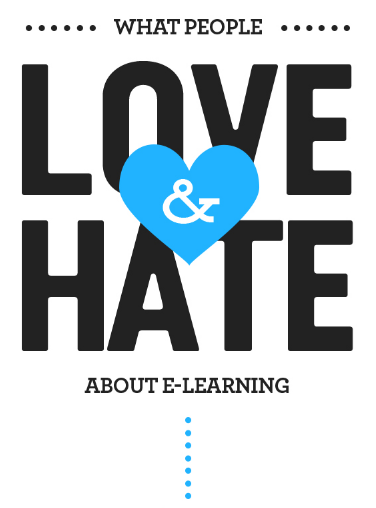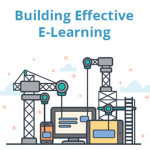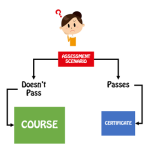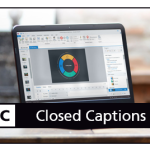
The infographic below shows the results of a recent survey we conducted on what people love and hate about elearning and online courses. I’ve included a few of my thoughts.
The E-Learning Industry is Hot!
The industry is growing like crazy. This is good because often the training people are the first to get cut when companies restructure. However, many of the emerging technologies and devices (like mobile apps) are centered on learning. Instead of training being the first group on the chopping block, today it plays a key role in the evolution of online courses and learning moving forward.
E-learning is still relatively new and many organizations are still making the move to online courses. The authoring tools offer plenty of capability, but the next step in the process is making all of these online courses effective. That’s where you come in.
What About Those That Take the Online Courses?
I routinely ask my friends and neighbors what types of online courses they take at work and how they feel about it. Usually the feelings are mixed. They tend to find the online courses boring, but prefer them over going to a class.
The survey shows that most people want relevant content and almost as many prefer decision-making scenarios. One value of elearning is its flexibility to the organization and the learner. However, too often we focus on pushing content out efficiently and lose sight of the other benefits of elearning. However, online courses can be so much more than a bunch of screens of information. What can you do to change that?
What Do YOU Love and Hate About E-Learning?
Share one thing you really like about elearning and one thing you don’t like. Here are a couple of my thoughts.
What I like:
I like that I am part of an evolving industry. Things are changing fast. When I first started we were using overhead transparencies and 35mm slides. Today, not only do the online course creators have more options, but so do those who participate. Virtually everyone carries a small production studio with them at all times via their smart phones and tablets. It’ll be cool to see more of those capabilities integrated with learning and the online courses created.
What I don’t like:
The thing I don’t like about elearning is that the organizations that purchase the software don’t commit adequate resources to help their staff build better online courses. Many of the people I meet stumble into elearning from a more traditional training background. Thus they need more than the software to get up to speed. They also often don’t get a budget or resources to create the appropriate assets like graphics and other media. This just sets them up for failure and perpetuates a lot of the negative feelings people already have about online courses.
That’s what I love and hate. What about you?

Click to learn more.
Events
Free E-Learning Resources




















0
comments